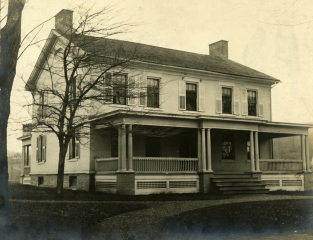12:00 evenings. Among the “Y’s” other activities were: a reception for freshmen which was primarily for orientation purposes, publication of the Hand Book which had expanded in size and content by 1922, and a student employment service for those who needed odd jobs.
Professor Hoerrner’s vigorous leadership gave new life to musical activities. The Glee Club flourished, an orchestra was begun, and occasionally in the fall, a band was organized, primarily to play at the football games. Informal singing of college songs continued to have a widespread appeal. New ones were written and Songs of Colgate, a 30-page compilation by Robert G. Ingraham, ’13, was published in 1912 and a revised edition came out in 1916.
Dramatics, too, was a popular activity. Members of the former Dramatic Club reorganized in 1914 as the Masque and Triangle Club with Anthony F. Blanks, Professor of Public Speaking, as their advisor and coach. The old Academy chapel in the Administration Building served as their “Little Theater” and nearly 100 tried out for their first production, She Stoops to Conquer. The organization even induced four professors to give them lectures on English, French, Latin and Greek drama. By the 1920’s Masque and Triangle was sponsoring a playwriting contest and producing some of the prize-winning entries.
Colgate debaters enjoyed a heyday during the Bryan period when interest in public speaking was especially keen. Enthusiastic student and faculty support comparable to that for athletic contests, the many able undergraduates who competed with each other to make the





